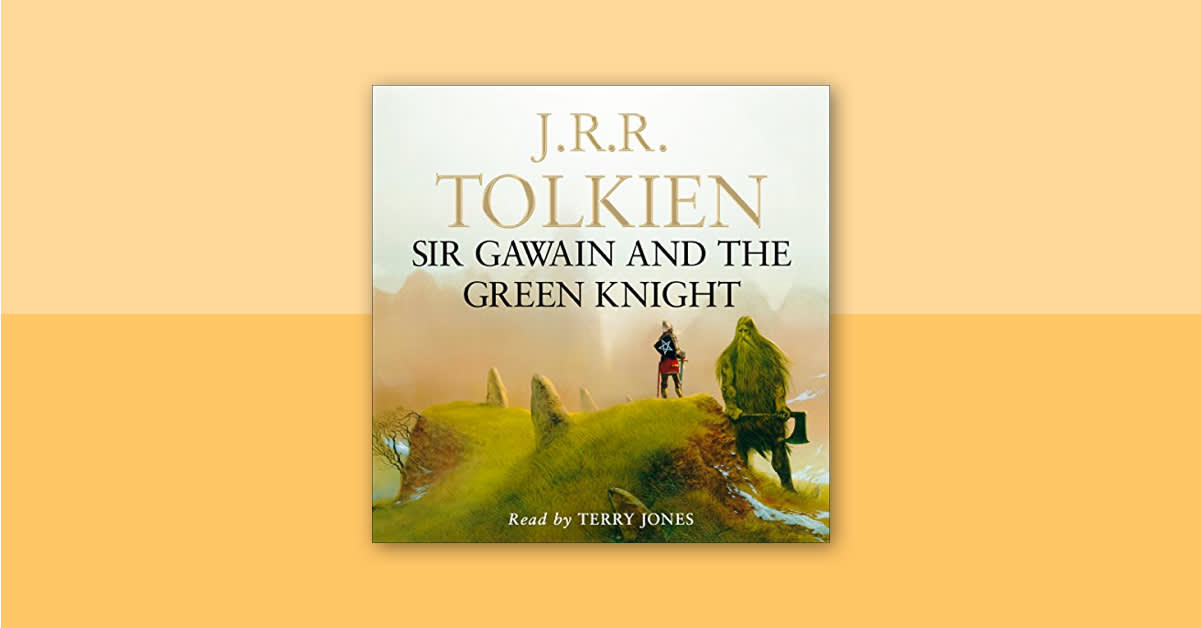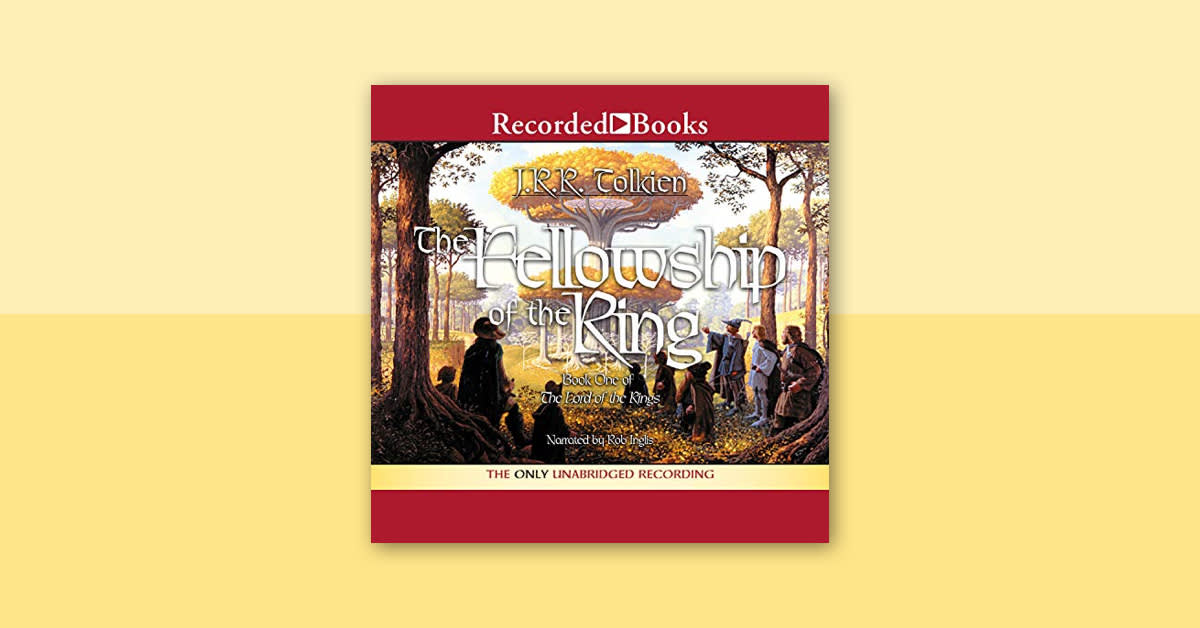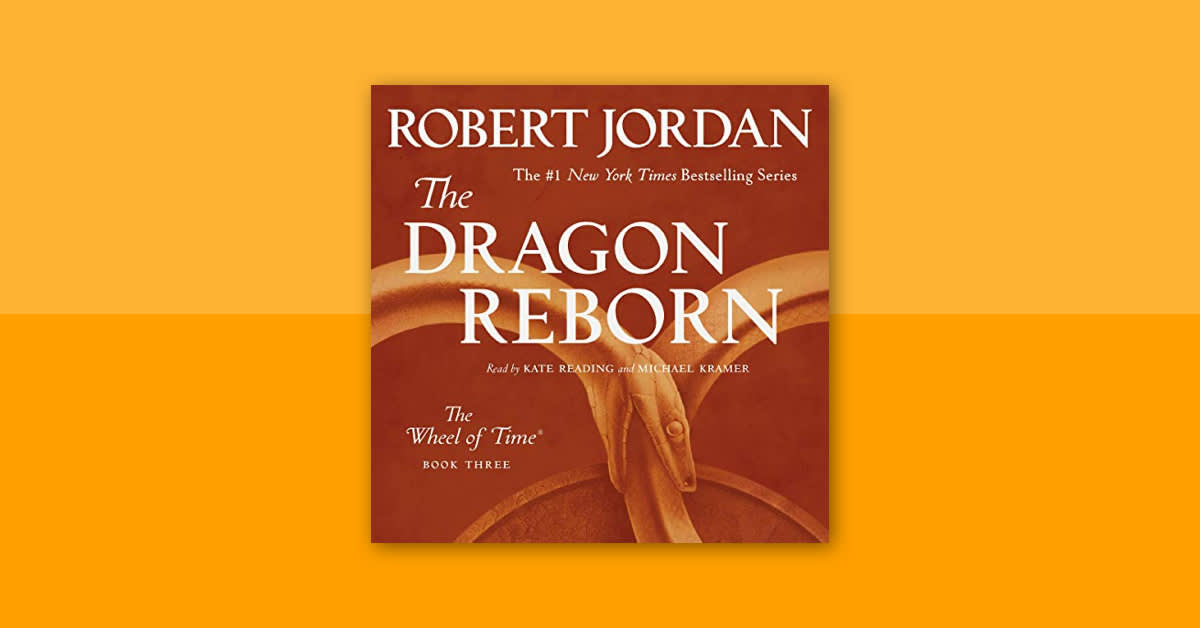For centuries, tales of King Arthur and his knights have fascinated audiences as these legends have been told and told again, with fresh interpretations and new twists. "Sir Gawain and the Green Knight" is an Arthurian tale about Sir Gawain, one of the knights of the round table, and his misadventures following a clash with the titular Green Knight. It was written as a chivalric romantic poem, with alliterative stanzas, in Middle English. The author of the poem is unknown, although the narrative draws from English, Welsh, Irish, and French stories from the same time period.
The poem dates back to the 14th century and, experts believe, survived as a manuscript that came into the possession of Robert Bruce Cotton, a Medieval English scholar and collector. It wasn't published until the 1830s; since then, multiple translations, both academic and entertaining, have appeared. Perhaps the most famous translation is by J.R.R. Tolkien, author of the Lord of the Rings trilogy, who was a noted academic and professor of English as well as the creator of fantasy epics. Today, listeners alike who are interested in the poem, which would have been written around the same time as Geoffrey Chaucer's The Canterbury Tales, can find Tolkien's translation on Audible, narrated with wonder and whimsy by Monty Python’s Terry Jones. (For medieval poetry enthusiasts: Jones also narrates an Audible exclusive version of a pivotal part of The Canterbury Tales: its prologue.)
Warning: The following article contains spoilers for "Sir Gawain and the Green Knight" and its 2021 film adaptation, The Green Knight.
What is "Sir Gawain and the Green Knight" about?
The poem begins in Camelot on New Year's Eve, when, in the midst of holiday merrymaking, King Arthur asks to hear a story. The Green Knight, large and imposing, rides into Camelot on a green horse, carrying no weapon but an axe and, in his other hand, a holly branch. He comes before King Arthur and declares his intention. He does not want to fight anyone in the court, as he would surely win, but would like to challenge the knights in a holiday game. He offers up the axe to anyone who can take it and strike him with it, on one condition: In one year and a day, the Green Knight will come back to court and return the blow.
Of King Arthur's knights, the youngest (who also happens to be Arthur's nephew), Sir Gawain steps forward to accept this challenge. When King Arthur grants him this honor, the Green Knight hands Gawain the axe and bares his neck. With one blow, Gawain beheads the Green Knight. He does not die. Instead, the Green Knight picks up his head and places it on his body. Once restored, he reminds Gawain they must meet again in a year and a day, so he can return the blow. He instructs Gawain to meet him in the Green Chapel. Before departing, he shows Queen Guinevere his wound, horrifying her, although King Arthur urges his lady not to take the Green Knight seriously.
A year later, Sir Gawain sets out to find the Green Chapel and uphold his end of the bargain with the Green Knight. After much travel and some misadventures (which are largely glossed over), he comes upon a stately castle where a lord and his beautiful lady hold court. They welcome Sir Gawain. In their court also sits an unsightly old woman. She remains unnamed but is treated with great deference. When Gawain reveals his quest, the lord assures him that the Green Chapel is very close. The lord then offers to host Gawain until the appointed day when he will meet with the Green Knight. Sir Gawain accepts.
While waiting for his meeting with the Green Knight, the lord offers Gawain a proposal. Every day, he will go hunting and each night, he will present Gawain with what he's caught. In return, Gawain will present the lord with what he's gained throughout the day. Sir Gawain agrees.
The following day, the lord goes out to hunt. While he's gone, his lady comes to Gawain's bedchamber and attempts to seduce him. Gawain refuses her advances but despite his best efforts, the lady manages to give him one kiss. Therefore, when the lord returns that evening, he presents Gawain with a deer—and Gawain must give him a kiss, but doesn't tell the lord who gave it to him. The second day, the lord leaves for the hunt. Again, Gawain is visited by the lady. This time, she manages to give him two kisses. That evening, the lord presents Gawain with a boar. In return, Gawain bestows two kisses upon the lord. The third day, the lord goes out to the hunt, and his lady once again visits Gawain, desperate. Gawain tries to refuse all of her attempts, and she tries to give him a gold ring. When he also refuses that, she insists he take her green and gold sash, which is charmed to protect him from all harm. Gawain finds himself unable to refuse, given that he must face the Green Knight the next day. She also gives him three kisses, which Gawain then presents to the lord when he returns with a fox. However, Gawain does not give the lord his wife's sash.
When morning arrives, Sir Gawain must finally face the Green Knight. He heads to the Green Chapel, which turns out to be nothing more than a mound in the dirt, with a cavern beneath it. He also wears the lord's wife's sash under his clothing. Inside the cavern, he finds the Green Knight sharpening his axe blade. Gawain approaches, prepared to meet his fate.
The Green Knight swings the blade at Gawain's neck but, at the last minute, pulls back. He mocks Gawain for flinching, claiming he was testing his nerve. Sir Gawain readies himself for the next blow and tells the Green Knight to do his worst. This time, he does not flinch. But again, the Green Knight pulls back at the last minute. Finally, Gawain demands that the Green Knight deliver his blow, and he does, with force—but Gawain suffers only a small cut on his neck. As Gawain prepares to fight, the Green Knight reveals himself to be the lord from the nearby castle.
He tells Gawain that the whole ruse was designed by Morgana le Fey, Arthur's stepsister, to test his knights and frighten Guinevere. Gawain reveals that he is in possession of the sash, and the Green Knight tells him that it saved him. The cut on his neck, however, is a result of keeping the sash a secret. Gawain is ashamed at his trickery, but the Green Knight absolves him of his guilt. He then sends him back to Camelot with the sash, and his story. Upon his return, the knights receive Gawain well. They all promise to wear a green stash in his honor, and as a reminder to strive for honesty in all dealings and endeavors.
How does The Green Knight compare to the poem that inspired it?
The 2021 film adaptation, called simply The Green Knight, is a more dramatic take on the tale. Overall, it follows the original poem rather closely, with some small differences and flourishes. In this film, BAFTA Award-winning and Academy Award-nominated actor Dev Patel plays Sir Gawain. The movie begins with him waking up in a brothel on Christmas morning with his lover, a common woman named Essell. He returns to Camelot for the festivities, where he receives a scolding from his mother, Morgana le Fey. While attending his uncle King Arthur's Christmas feast, his mother performs a ritual in a tower to summon the Green Knight. The Green Knight comes into Camelot and presents a challenge: Anyone who can strike a blow against him will win his green axe, but he will have to face the Green Knight in the green chapel in exactly a year and receive the same blow. Gawain steps forward to meet the challenge. Wielding Excalibur, he beheads the Green Knight. He is shocked when the knight picks up his own head and reminds Gawain that they shall meet again in exactly a year.
As the year passes, Gawain spends his time frivolously while King Arthur reminds him of the commitment he made to meet the Green Knight. Finally, Gawain must set off, though he is reluctant to do so. Mounting his horse, he takes with him the green axe and a green sash gifted to him by his mother, which is supposed to protect him from physical harm. Along the way, he comes across a battlefield littered with bodies and a young boy scavenging the fields. When he asks the boy for directions, he's told to follow a stream to the green chapel. Suddenly, the boy and two companions ambush Gawain, stealing his axe, his horse, and his sash. Gawain manages to escape from his bindings with his sword, but only manages to make it to an abandoned cottage for the night. There, he is awoken by the ghost of a young woman who begs him to return her head to her body. He finds her skull and buries it with the rest of her skeleton before moving on.
As he continues on his travels, Gawain befriends a fox, who joins him, and eventually comes across a castle. The lord of the castle invites him to stay, and tells him the green chapel isn't far away. Gawain accepts his invitation, and is intrigued by the lady of the castle, who looks remarkably like his lover, Essell. She makes amorous advances towards Gawain. Although tempted, he rebuffs her.
The next morning, the lord greets Gawain and proposes an exchange. He will go hunting and then give Gawain whatever he catches if Gawain gives him whatever he finds in the castle while the lord is away. Gawain agrees. Once more, the lady approaches him, and this time, Gawain doesn't reject her advances. She gives him a green sash, which she claims she made herself. It looks remarkably like the sash his mother gave him and he lost. Then, Gawain flees with the sash and encounters the lord in the forest. He kisses the lord, as he received his wife's kiss, but doesn't give him the sash. The lord says he caught a fox. When he releases his catch, Gawain is reunited with the fox he befriended. Together, they continue on the journey. But when Gawain reaches a stream with a boat that will take him to the Green Chapel, the fox implores him not to go any further.
Nonetheless, Gawain goes forward and enters the chapel, where the Green Knight is in hibernation. On Christmas morning, the knight awakens. Gawain readies himself to face the blow. In the instant before he is struck, he has a vision of his future. In this vision, he returns to Camelot and, when King Arthur dies, is crowned king. He bears a son with Essell, but abandons her in favor of a noblewoman. His son grows up, only to die in battle. His people revile him, and his enemies attack from all sides. As an old man, he is hated and abandoned by everyone. Shaken by the life he sees ahead, Gawain is prepared to let his head fall.
When he comes back to the present moment, he removes his protective green sash and tells the Green Knight that he is ready to die. The Green Knight smiles kindly and tells Gawain that he is very brave. Then, he slides a finger across his throat and says, "Now, off with your head," and that's the end. This ambiguous ending has been hotly debated among critics and fans of the film. Is it merely the Green Knight poking a bit of fun at Gawain? Or do these words signal his imminent demise?
No matter how you view the movie's ending or the poem on which it was based, The Green Knight is clearly a story about bravery and honesty of epic proportions, sure to leave you thinking long after the final scene. Even if Gawain truly does die at the end of the Green Knight’s blade in the 2021 film, he has found a sense of honor and peace within himself in that moment, opting to accept the inevitable and keep the bargain he had made. That quest for chivalry and a sense of inner tranquility is a theme at the very center of this timeless medieval tale.




